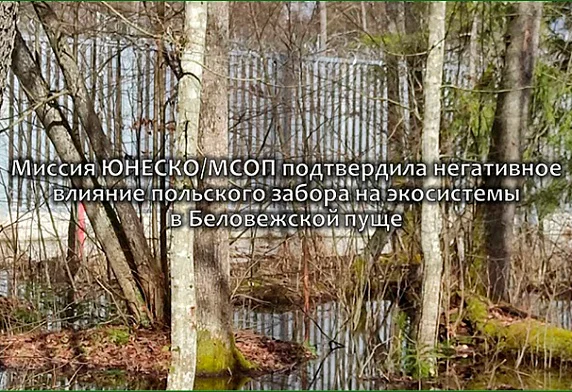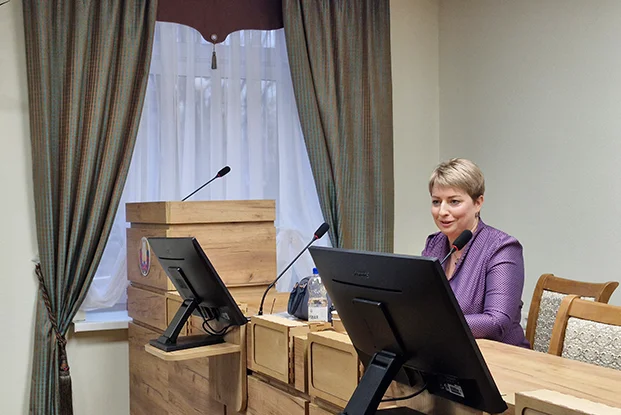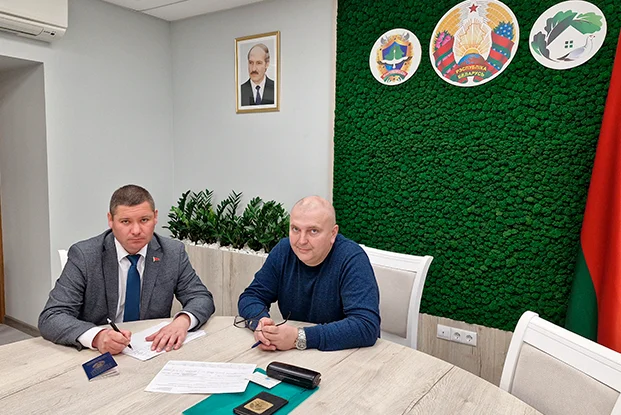
A reactive monitoring mission of UNESCO/IUCN confirmed the negative impact of the fence erected by Poland on the ecosystems in Belovezhskaya Pushcha. This was stated at a press briefing by the First Deputy Minister of Natural Resources and Environmental Protection Alexander Korbut.
From March 24 to 26 of this year, a reactive monitoring mission was carried out in the transboundary UNESCO World Heritage Site Belovezhskaya Pushcha, which included two international experts from UNESCO and IUCN. From the Belarusian side, it was attended by employees and management of the Ministry of Natural Resources, the Belovezhskaya Pushcha National Park, the Presidential Property Management Department, the State Border Committee, the State Control Committee of Belarus, the State Control Committee of Brest and Grodno Regions and others.
The monitoring mission is being organised as part of the implementation of the decision taken at the 45th session of the UNESCO World Heritage Committee to assess the impact of the barrier erected by Poland on the border with Belarus, which runs through the territory of the transboundary UNESCO World Heritage site Belovezhskaya Pushcha, on the ecosystems of this site.

“To do this, experts spent two days examining the areas adjacent to the fence in the Brest and Grodno regions,” said Alexander Korbut. “This was preceded by long-term work, over three years, by the Belarusian side with all international organizations. As soon as information appeared that the Polish side was going to build a fence along the Belarusian-Polish border, thereby cutting through the single Belovezhskaya Pushcha complex, Belarus immediately launched work on international platforms. The Ministry of Natural Resources, as well as other organizations, contacted various international structures with a request to assist in resolving this issue. Only UNESCO, as a conscientious and impartial organization fulfilling its duties, realized the scale of the tragedy and decided to send a reactive monitoring mission. The Ministry of Natural Resources also invited the Polish side to participate in the mission’s work on our territory, and we were also ready to go to the Polish side of Belovezhskaya Pushcha. Unfortunately, the Poles did not respond to our offer. International experts worked separately with the Polish and Belarusian sides.”
According to him, Belarus’ concerns about the deterioration of the Belovezhskaya Pushcha ecosystems due to the negative impact of the barrier structure are confirmed.
“Both the Belarusian side and international experts have identified four main areas of negative impact. These are the fragmentation of the forest complex and protected habitats, the disruption of transboundary environmental links, and the disruption of the hydrological regime associated with the disruption of natural processes near sections of the Narev, Narevka, Pravaya Lesnaya and other rivers, which has already led to flooding of forests, and, unfortunately, this situation will only worsen,” said the First Deputy Minister.
The fourth area is blocking animal migration routes. “The passages provided by the fence cannot be called passages for the movement of animals. Passages for small mammals must be at least 1 m high and 1.5 m wide. In fact, these are holes about 10 cm in diameter. Such a small diameter means that they will almost always be clogged with leaves, branches or earth. In most areas where the road passes, these areas are completely covered with earth. There are not enough passages for large animals, and they are closed on the Polish side. There are no regulations for their operation – no one knows when they will be opened and who makes the decision to open them. In general, the passages are non-functional, the negative impact on the animal world is enormous,” said Alexander Korbut.

In addition, a serious problem is the destruction of living ground cover during construction work, as well as the cutting down of the adjacent strip of relict forest and individual trees on the Polish side of the Belovezhskaya Pushcha. The analysis data of Belarusian scientists show that about 2.6 hectares of forest plantations were cut down during the construction of the fence. The number of damaged trees in the construction zone amounted to more than 1.2 thousand pieces. “The cutting down of individual trees on the Polish territory of the facility is currently ongoing,” the representative of the Ministry of Natural Resources noted.
Alexander Korbut also spoke about the opinion of the mission experts on the situation in the National Park. “International experts noted that Belovezhskaya Pushcha has long been a holistic, unified and interconnected system. The exceptional value of Belovezhskaya Pushcha lies in the interconnection of the animal and plant worlds in large areas untouched by fundamental ecological processes, the experts emphasized. Due to the disruption of the interconnection of the two systems, especially in the context of climate change, we can actually face the drying up of valuable forests on a catastrophic scale. Therefore, it is vitally important to restore the connection of these systems,” he emphasized.
The Ministry of Natural Resources will be guided by two principles in its work with UNESCO: “Two countries – one forest”, “Science and nature are outside of politics”, concluded Alexander Korbut.
Information BELTA








